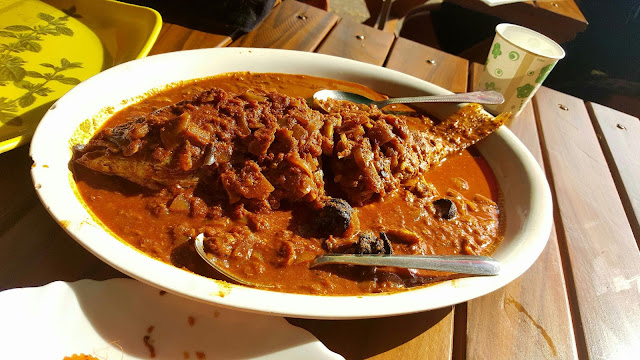If you're in Gangtok, you're probably there to enjoy the peace and beauty that Sikkim's capital (also a hillstation) has to offer. But if you're like me, then the first thing you Google when in a new city is "places to eat in....".
Sikkim's culture has a strong Tibetan influence and therefore their food consists of Tibet style dishes which have been adjusted to Indian tastes. Sticking to the basics, I decided to try the Roll House's Vege Momos and kathi style roll which were highly rated on TripAdvisor.
Vege Momo
Momos are the Indo-Chinese version of dunplings and are usually served with some chutney or or other spicy sauce; unlike your usual Asian dumplings that are served with soy sauce or chili oil.
These mixed vege and paneer momos were steamed perfectly - steaming hot on the inside but soft and warm on the outside so you are able to hold them while taking small bites without burning your fingers. The chutney packed a major punch so have water or lassi on standby. These momos make a tasty snack for any occasion. I highly recommend visitors in Gangtok to try these.
Roll House's Special Vege Roll
This roll was a large parantha or pouri (depending on your definition) wrapping up mixed stir-fried veges such as onion, paneer (Indian cottage cheese), capsicum, chillies and some cabbage. While this roll had a lot of flavour and really hit the spot on a cold Sikkim winter night, I didn't find anything too special about this roll. But, if you're like my friends then you might like this roll more than the momos. Either way, you really can't go wrong.
Gangtok is a beautiful and incredibly clean hill station in South Sikkim and there are many breath-taking views to enjoy (be sure to ride the Ropeway cable car), but if you don't have true Tibetan food while you're there then you have wasted your time. Indo-Chinese cuisine is a unique category of "Indian" food and must be enjoyed in its most authentic form.
Above: this low key joint is found hidden in an alley off the bustling market on Mahatma Gandhi Road
Above: the special roll
Below: the best momos that I have ever eaten
Above: view of Gangtok from the hotel
Below: a Buddhist monastery near Gangtok



















